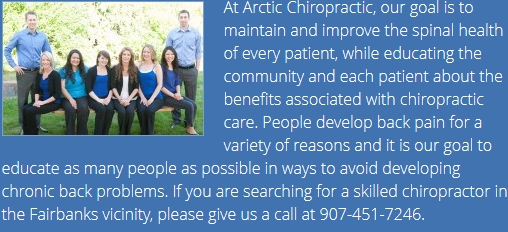Degenerative Joint Diseases
According to the Mayo Clinic, 80 % of the population will suffer from back pain at least once in their life. Furthermore, back pain is one of the leading causes of work absence thereby costing the US economy millions of dollars. The three common ways in which people develop back problems are physical strains and stresses, deterioration of the spine due to age or illness, and poor posture. There are many available treatments for back pain but the best treatment is taking preventive measures so it does not occur. Failing prevention, chiropractors provide drug free methods of treatments that are very effective.
Physical strains and stresses of muscles and ligaments or even tendons are the most common cause of back pain. Muscles function to move the bones to which they are attached and also work to hold one part of the body firm while the other is moving. Other parts of the body integral to movement are ligaments which connect bones at joints. Both muscles and ligaments can be easily damaged leading to back pain. These physical strains and stresses can result from overuse during exercise, lifting something heavy in an awkward manner, or even trauma during car accidents.
Diseases like osteoarthritis, a degenerative joint disease mainly affect the elderly. All work bearing joints such as hips, knees, and the spine in particular are affected. The disease manifests itself in its early stages as morning joint stiffness which progresses to pain during movement in its later stages. Other illnesses that can lead to back pain are sciatica, anorexia, and rheumatoid arthritis. Like osteoarthritis, these diseases also cause back pain but they have different causes. Rheumatoid arthritis is an auto immune disease that affects the lining of joints and synovial membranes which enable joints and bones to move with ease. Anorexia is a little different in that sufferers develop a decrease in bone density due to their prolonged low calorie and nutrient deficient diet. This decrease in bone density often leads to back pain later in life.
Posture is perhaps the most fundamental but overlooked aspect of one's health. The way we sit, stand and sleep can have an immense effect on back health. Perpetually standing or sitting in a misaligned position, either by slouching or arching backward can exact a tremendous toll on our spinal health. Slouching creates up to fifteen times more pressure on your lower back compared to standing up straight. Lying on a saggy mattress will also strain joints and ligaments in certain portions of the spine.
The three ways that you can ensure that you do not experience back pain all involve preventive care. Your back is akin to a structural building with the center structure being your vertebral discs. The other "struts" are your core muscles in the back, and your core muscles in the abdomen. Keeping both sets of core muscles strong and flexible is important since they can act as splints and can bear weight, decreasing the amount of pressure that the discs have to bear; this is especially important in degenerative joint diseases. Regular exercise is necessary for strong flexible core muscles. A healthy diet helps in preventing back pain two fold; it helps maintain your weight within a healthy range, and also helps you build bone density. Since bad posture causes back pain, it's no surprise that paying close attention to your posture can help prevent back pain. The four curves of the spine are normally evident in good posture, but must not be greatly exaggerated. Good posture can be attained simply by a conscious effort to stand as tall as possible, without slumping. This will hold the body erect without distorting your normal curves. Appropriate footwear is also necessary for good posture; well-fitting shoes with enough arch support and plenty of space for the toes to move. Good posture when sleeping and sitting is also a must. When sleeping, a bed that is comfortable and supportive also helps maintain good posture; and, when seated, a comfortable chair that supports the spine is required. It is also important to try and not sit in the same position for a long period of time.
The body wants to be well; it works hard to achieve a sense of balance, and has remarkable powers for protecting itself against disease. Chiropractors tap into the body's ability to heal itself. Before a chiropractor treats a patient, he or she first takes detailed medical history, followed by physical examination. The chiropractor may then order lab tests or diagnostic imaging to determine if treatment is appropriate for your back pain. Only once this is complete will the chiropractor embark on a course of treatment. The treatment plan may involve one or more manual adjustments during which the doctor manipulates the joints, using a controlled, sudden force to improve range and quality of motion. The other two ways in which a chiropractor may treat his patient would be to incorporate nutritional counseling and exercise/rehabilitation into the treatment plan. The goals of chiropractic care include the restoration of function and prevention of injury in addition to back pain relief.
The magnitude of back pain in terms of personal suffering, medical costs, lost work time and wages, as well as disruption in quality of life is staggering. It is then clear that maintaining good spinal health is important. Prevention, the best way to cure pain back is to avoid it in the first place. If you exercise regularly, keep yourself flexible, eat healthy and maintain good posture, you are less likely to have back trouble. If mechanical back trouble does develop, spinal manipulation provided by a chiropractor can be a very effective treatment.





 Home
Home




